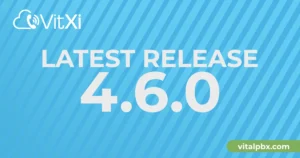How Does a PBX System Work? A Complete Guide for 2025
How you handle calls, direct inquiries, and connect your team can define your customer experience and operational efficiency. But as your business grows, a single phone line quickly becomes a bottleneck. This is where a PBX system steps in, acting as the central nervous system for your company’s telecommunications. But how does a PBX system work, exactly?
Many business owners hear the term “PBX” but imagine a dusty closet of tangled wires. The reality in 2025 is far more sophisticated, powerful, and accessible. This guide will demystify the Private Branch Exchange, breaking down its components, exploring its evolution from analog to the cloud, and illustrating how it seamlessly routes calls to keep your business moving. Get ready to understand the technology that can transform your communication from a simple utility into a strategic asset.
The Core Concept: What is a PBX System?
At its heart, a PBX (Private Branch Exchange) is a private telephone network used within a company or organization. Think of it as your own mini phone company, tailored specifically to your business needs. It allows you to have more phones than physical phone lines and enables free calls between users and other useful features.
Beyond a Simple Phone Line
Instead of having a separate public phone line for every employee, a PBX system allows you to share a pool of external lines. When someone from the outside calls your main business number, the PBX is the traffic controller that directs the call to the right person or department inside your organization. It manages all inbound, outbound, and internal calls, making communication streamlined and professional.
The Key Components of Any Modern PBX System
To understand how a PBX works, it helps to know its fundamental building blocks. While the technology has evolved, these core components remain central to its function:
- The PBX Server (The Brain): This is the central computer and software that runs the entire system. In an on-premise setup, this is a physical server at your office. In a cloud-based system, this server is hosted and managed by a provider like VitalPBX. It processes all call logic, routing rules, and features.
- Trunks (The Gateway to the World): These are the connections that link your private PBX network to the wider public telephone network. In the past, these were physical copper lines (PSTN). Today, they are most often virtual lines called SIP Trunks, which run over your internet connection.
- Extensions (The Endpoints): These are the individual devices connected to your PBX. Each employee is typically assigned an extension number (e.g., 101, 102, 250). Endpoints can be:
- Physical IP desk phones.
- Cordless IP phones.
- Softphones (software on a computer or smartphone).
- Conference room speakerphones.
- Network Infrastructure: This is the local area network (LAN) that connects all your endpoints to the PBX server. Modern IP PBX systems use the same Ethernet cabling and Wi-Fi that your computers use, eliminating the need for separate, costly telephone wiring.
The Evolution of PBX: From Analog Wires to the Intelligent Cloud
The way a PBX system works has dramatically changed over the decades. Understanding this evolution is key to choosing the right solution for your business in 2025. What was once a complex, hardware-heavy system has become a flexible, software-driven powerhouse.
Traditional Analog PBX Systems
The original PBX systems were hardware-based and relied on analog technology. They connected to the Public Switched Telephone Network (PSTN) via physical copper wires. Every internal phone was also physically wired back to a central switching cabinet. While revolutionary for their time, these systems were expensive, difficult to scale, and lacked the advanced features we expect today. They are now considered legacy technology.
The Game Changer: How IP PBX Systems Work
The biggest revolution in business telephony was the IP PBX, which leverages Voice over Internet Protocol (VoIP) to transmit calls as data over a computer network. This changed everything. Instead of needing separate wiring, an IP PBX uses your existing LAN to connect phones and the server.
This shift to a software-based approach, like VitalPBX, unlocked a universe of new features. Because calls are just data, they can be easily recorded, routed based on complex rules, converted to email (voicemail-to-email), and integrated with other business software like CRMs. This is the foundation of modern business communication.
Hosted and Cloud PBX: The Modern Standard for 2025
The final step in this evolution is the Cloud PBX, also known as a Hosted PBX. Functionally, it’s an IP PBX, but with one crucial difference: the server isn’t located in your office. It’s hosted in a secure, professionally managed data center by a provider. You simply connect your IP phones and devices to it over the internet.
This model has become the default choice for most businesses due to its immense benefits:
- Lower Upfront Cost: No need to purchase and maintain an expensive server.
- Ultimate Scalability: Add or remove users with a few clicks.
- Reduced Maintenance: The provider handles all updates, security, and upkeep.
- Geographic Flexibility: Connect employees from anywhere in the world—the office, home, or on the road—to the same phone system.
Comparing an on-premise vs. a cloud PBX is a critical decision, but the cloud offers unparalleled flexibility for the modern, dynamic workforce.
A Step-by-Step Look at How a PBX Manages a Call
Let’s walk through a real-world scenario to see a modern IP PBX in action. Imagine a customer calls your main business number.
Step 1: Receiving an Inbound Call
The call originates from the outside world and travels to your business. If you’re using modern technology, it arrives via a SIP Trunk over your internet connection. The request hits your PBX server, whether it’s on-premise or in the cloud. The PBX instantly recognizes it’s a new inbound call.
Step 2: The PBX Brain at Work (Routing and Features)
This is where the magic happens. The PBX software immediately consults the rules you’ve configured. It can ask a series of questions in milliseconds:
- Time Conditions: Is it during business hours (e.g., 9 AM – 5 PM, Monday-Friday)? If not, it can automatically send the call to a “night mode” voicemail or an after-hours answering service.
- IVR (Auto Attendant): If it’s during business hours, the PBX plays your pre-recorded Interactive Voice Response menu. “Thank you for calling Our Company. For Sales, press 1. For Support, press 2. To speak with the operator, press 0.”
- Call Queues/Ring Groups: Let’s say the caller presses 1 for Sales. The PBX can then route the call to the “Sales” ring group, making the phones of all available sales agents ring simultaneously. Alternatively, it could place the caller into a queue, play music on hold, and announce their position (“You are third in line”) until an agent is free.
Step 3: Connecting to an Extension and Managing the Call
Once an agent (let’s say it’s Jane at extension 105) answers the call, the PBX establishes a direct connection between the outside caller and Jane’s phone. From here, the PBX continues to manage the call, enabling powerful features:
- Call Transfer: Jane can transfer the call to another colleague (e.g., “Let me connect you with Bob in engineering at extension 210”).
- Call Parking: Jane can “park” the call on a virtual hold, allowing any other employee to pick it up from their own phone.
- Call Recording: If enabled, the PBX records the entire conversation for quality assurance or training purposes.
Making an outbound call is simply the reverse process. An employee picks up their phone, dials an external number, and the PBX grabs an available external line (SIP trunk channel) to connect the call to the outside world.
Why Your Business Needs a PBX System: Key Features and Benefits
Understanding how a PBX works is one thing; understanding why it’s essential for your business is another. The benefits go far beyond just managing calls and boil down to cost, professionalism, and efficiency.
Unlocking Powerful Communication Features
A modern PBX like VitalPBX comes loaded with features that were once only available to massive corporations. Many of these are built directly into the core software at no extra cost.
- Interactive Voice Response (IVR): The auto-attendant that professionally greets and directs callers.
- Ring Groups & Call Queues: Efficiently distribute calls to teams and manage high call volumes without losing customers.
- Voicemail-to-Email: Receive voicemails as audio files directly in your email inbox for easy access and archiving.
- Call Recording: A crucial tool for training, dispute resolution, and compliance.
- Conference Bridges: Host multi-party conference calls with employees and external clients.
- Detailed Call Reporting (CDR): Get insights into call volume, agent performance, and peak call times to make data-driven decisions.
The Tangible Business Benefits
These features translate directly into significant advantages that give you a competitive edge. The benefits of moving to a VoIP-based PBX are clear:
- Drastic Cost Savings: Eliminate the need for expensive individual phone lines. Calls between extensions are free, and VoIP significantly lowers the cost of long-distance and international calls.
- Enhanced Professional Image: An IVR, custom music on hold, and seamless call transfers make even the smallest business sound like a large, established enterprise.
- Improved Productivity & Customer Service: Calls get to the right person faster. Customers aren’t left on hold indefinitely. Features like find-me/follow-me ensure important calls reach you wherever you are.
- Unmatched Scalability: As your team grows, you can add a new user and have their phone running in minutes. There’s no need to call a technician or install new physical lines.
- Unified Communications (UC): Modern PBX platforms are the hub for Unified Communications, integrating voice, video calling, instant messaging, and presence into a single platform for seamless collaboration.
Frequently Asked Questions About How PBX Systems Work
What is the main function of a PBX?
The main function of a PBX is to manage and route all telephone calls for a business. It acts as a central switchboard, connecting internal extensions with each other and with the external public telephone network, all while providing a suite of advanced calling features.
Is PBX the same as VoIP?
No, but they are closely related. VoIP (Voice over Internet Protocol) is the technology that converts your voice into digital data to be sent over the internet. An IP PBX is the system (the “brain”) that uses VoIP technology to manage and route those calls. You can think of VoIP as the fuel and the IP PBX as the engine.
Do businesses still use PBX systems in 2025?
Absolutely. In fact, they are more essential than ever. While old analog systems are being phased out, modern IP PBX and Cloud PBX systems are the standard for business communication. They provide the flexibility, features, and scalability that modern businesses require to stay competitive.
What’s the difference between a traditional PBX and an IP PBX?
The primary difference is the underlying technology. A traditional PBX uses physical copper wiring (PSTN) for both internal and external connections. An IP PBX uses your computer network (LAN) and the internet (VoIP) to manage calls. This makes IP PBX systems more flexible, feature-rich, and cost-effective.
Can I use my mobile phone with a modern PBX system?
Yes! This is a major advantage of modern IP PBX systems. Using a “softphone” app, you can turn your smartphone into a full-featured office extension. You can make and receive calls using your business number, access your company directory, and transfer calls, all from your mobile device, anywhere you have an internet connection.
Taking Control of Your Business Communications
We’ve journeyed from the basic concept of a private phone network to the sophisticated, intelligent heart of a modern business. As we’ve seen, the answer to “how does a PBX system work?” has evolved from a story of wires and switches to one of software, data, and the internet.
A modern IP PBX is no longer just a tool for making and receiving calls. It’s a strategic platform that enhances your professional image, slashes communication costs, boosts team productivity, and provides the scalability to grow with you. By intelligently managing every call, it ensures your customers have a seamless experience and your team has the tools they need to succeed.
If your business is still relying on outdated phone lines or a system that can’t keep up, it’s time to make a change. The power to transform your communications is more accessible and affordable than ever before.
Ready to experience the power and flexibility of a modern IP PBX? Discover how VitalPBX can transform your business communications. Download our free version today and see the difference for yourself!




